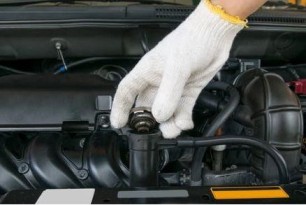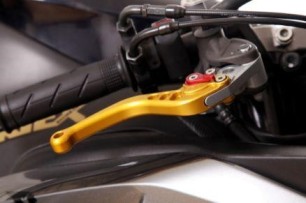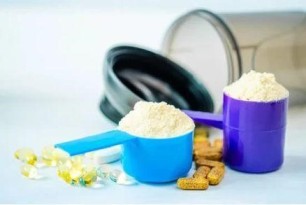General Insurance Blogs, Articles & Updates by - Magma Insurance
Have us call you
- RENEW YOUR POLICY
- BUY NEW POLICY

Learn about the appropriate ways of disposing the automotive fluids and chemicals
Toxic waste should not be thrown in the trash, flushed down the drain, or dumped in the yard. Instead, you must dispose of these liquid wastes to avoid damaging the environment, groundwater contamination and save yourself and others from the polluted surroundings.
In this post, we have provided ways to dispose of automotive fluids and chemicals safely.
1. Used engine oils:
These fluids can contaminate millions of gallons of groundwater and disturb pedogenesis. So, for the appropriate disposal of these oils and recycling them, you must follow these simple methods.
• Store all the used oils: If you change engine oils frequently, you must have a separate container that holds all the used oil. Most retailers sell their oils in a reusable container, making separating and storing the used oil easier. Once you have sorted the oil, you can return it to the dealer after labelling it as "WASTE OIL." Your retailer will then recycle the oil for the petroleum industry or use it in furnaces for burning purposes.
• Recycling the waste: Once you have drained the used oil from your vehicle, you can use it for oiling your cycle chains, motor chains, or you can use it for other minor household purposes.
NOTE: Do not use waste oil in any vehicle. This will damage your engine and lower the performance of the car.
2. Antifreeze or Coolant:
Initially, you have to drain out all the coolant in a clean pan from your radiator without spilling a single drop of it. Once you have done that, store the coolant in a tightly sealed bottle at a place away from children. To recycle used coolant, you can give it to a mechanic or a car utility shop.
Many shops have machines that recycle the used coolants by filtering out the glycol from the previously used coolant. They add specific additive packages and solvents that turn it into a new coolant. After this process, all that is left is a teaspoon of sludge that can be disposed of with the other insoluble particles.
But there is a catch here: you will have to ensure that no other fluid is mixed with the coolant while transferring it. Even a single drop of oil or other substance will make it nearly impossible to conduct the recycling process.
3. Brake fluids:
Disposing brake fluids is easy and does not require much effort. All you need to do is collect all the brake fluid in a container and keep it in the open air. As the brake fluid is alcohol-based, it will evaporate in two days. As a precautionary measure, make sure that you keep the container away from the reach of pets, children or a source of fire or ignition.
The chemical fluid used in cars can be fatal for the environment. Once these chemicals are mixed into the atmosphere, they can disturb many living organisms' and adversely affect the ecosystem. Not just this, if these fluids make their way into any other part of your vehicle, they can cause severe damage. The repairing of the damaged parts can drain your pockets significantly. However, you can avoid this by investing in a car insurance plan that will cover the expenses of the repair work and servicing. Get online car insurance to avail the benefits of policy add-ons for financial freedom.
Learn more about the benefits of online car insurance HERE .
Disclaimer: The information provided above is for illustrative purposes only. To get more details, please refer to policy wordings and prospectus before purchasing a policy.

Let's understand the terms wet clutch and dry clutch
Petrol engines do not create much power at low rpm; they must rotate quickly before delivering enough power to the wheel. The clutch is a device used to gradually and smoothly introduce power into the engine.
Motorcycle companies provide two types of clutches in their bikes- a wet-type and a dry-type. Today's blog will give you all the information on both types.
How does a clutch work?
Before we get into the types, let's understand how a typical clutch works. Consider two plates, one attached to the engine and the other to the gearbox. There is no contact between the engine and the gearbox. When they come into contact, the friction allows a transfer of power. When the force is increased, the amount of power transferred increases correspondingly.
Now that you know the functioning let's get into the types.
Dry Clutch:
A dry-type clutch is not immersed in liquid and engages by the principle of friction. The clutch plate is located outside of the engine housing. This implies it is in direct contact with the air and receives no lubrication. Since the plate gets heated due to friction, the dry-type clutch is usually bigger to increase the surface area of the clutch plate for effective cooling via air.
Essential things to know about a dry clutch:
• The torque transmission of Dry Clutch is better due to the absence of oil.
• Dry clutches are typically single-plated.
• The noise in a dry clutch is greater and lasts longer as wear and tear increases.
• Dust particles can gather in the clutch's casing.
• The life cycle of a dry clutch is typically shorter.
• A dry clutch has a high repair demand and expense.
Wet Clutch:
Wet clutches, as opposed to their dry counterpart, are coated with engine oil, allowing the clutch plates to cool. As a result, wet clutches withstand more significant damage. They are quieter at rest, making them ideal for stop-and-go traffic.
The presence of lubricant lowers the torque transmitting capacity due to a lower coefficient of friction between the clutch plates.
Essential things to know about a wet clutch:
• A wet clutch plate(s) is found within the engine housing.
• Wet clutches are employed in high torque circumstances where friction levels are high.
• Wet clutches have substantially less wear and tear.
• The oil filter in the wet clutch casing removes dust particles.
• The life cycle of a wet clutch is often longer.
• A wet clutch has very minimal maintenance needs and costs.
Here is all you need to know about clutches. Most bikers prefer a wet clutch since it is ideal for most on-the-road sports bikes.
However, if you want all the horsepower that you get from an engine, as in the case of an all-out racing bike, you should opt for dry clutches. While you decide on the clutch type, opt for bike insurance online to protect clutches from unforeseen wear and tear in the long run. Reliable bike insurance will cover the expenses required for the repair work of your bike.
Click HERE to buy bike insurance online.
Disclaimer: The information provided above is for illustrative purposes only. To get more details, please refer to policy wordings and prospectus before purchasing a policy.

Best tips to make your home warmer during the winter season
From Christmas to New Year, winter is welcomed as the joyful season. Despite the temperature falling, this season spreads its charm throughout the world, and the reasons to celebrate don't end. Nonetheless, for all of the delight that the season brings, it also bears bitterly cold weather, as well as a burlap sack full of mist, wind, and snow. Pretty knitwear, beautiful sunsets, countless cups of hot chocolate, and crisp evenings indoors are all things to look forward to.
However, it is no pleasure to have the wind blowing through your house, leaving you with chattering teeth and ice-cold feet. Following is a list of the best ways to keep your house warm during these days of inevitable coldness.
1. Use thermostatic radiator valves:
These valves function by letting you schedule the heating to turn on at predetermined intervals, helping you save energy by only using it when required. In addition, the new smart thermostats let you operate remotely via your smartphone.
2. Make use of curtains:
Sunlight is free, hence take advantage of it. Open your curtains during the daytime for abundant free heat. Close your windows as it becomes darker to provide another insulating layer and preserve the heat in your rooms. You can also opt for heavy curtains to obstruct the cool breezes from getting in.
3. Make the most of your ceiling fan:
Consider placing a fan at the top of your stairway to drive warm air rising through the floors back down to you. If you reverse the flow direction of your fan, warm air will be blown back into the room. Set the fan speed to low for optimum efficiency.
4. Reorganize your furnishings:
Be tactical with your furniture arrangement and check whether the sofa or bed is blocking the radiator and preventing it from heating the entire room. Place frequently used furniture around any heat source to get enough warmth.
5. Use rugs to cover the flooring:
Having rugs and carpets in your home will naturally help in improving insulation. In addition, it is stylish to layer rugs, so you won't have to go for a single enormous pattern to cover a wider area, and your house will seem instantly warmer.
6. Replace your boiler:
If your current boiler is more than a decade old, it's probably time to upgrade to a newer, more efficient type. An old, outdated boiler may consume more power, increasing your electricity bill significantly. However, a brand new one is less likely to have any problems and will consume less energy to generate the same amount of heat.
Winters are challenging, especially if you live in the frigid regions of our country. These are some ideas to keep your home warm and safe during the cold season. However, apart from these tips, insurance is crucial to protect your home throughout the year and add value to it. Purchase the best house insurance India plans that meet your requirements and look for the best deals available to get maximum return on your investment.
To browse through our house insurance India plans, click HERE .
Disclaimer: The information provided above is for illustrative purposes only. To get more details, please refer to policy wordings and prospectus before purchasing a policy.

Merits and Demerits of consuming additional food supplements
Dietary supplements can be an easy option to provide your body with enough nutrients. Supplements fulfil your nutritional requirements, but they come along with their pros and cons. For example, many supplements have active ingredients that can adversely affect the body.
Here is a post that guides you about the different food supplements. To understand the merits and demerits, we will categorize the commonly used supplements in the market.
1. Dietary protein food supplements:
Protein is a macronutrient and the fundamental building block required to build muscles, maintain tissue, and boost the immune system. According to scientific research, every human need 0.8 to 2.2 grams of protein per body weight in kilograms.
Merits:
• You can carry these supplements anywhere. They are readily available in shakes, bars, cereals to provide on-the-go energy.
• Moreover, protein food supplements consist of certain micronutrients not often found in our daily food like EAA's, creatine, glutamine, etc.
• These supplements can help you reach your protein goal faster.
Demerits
• The downside of these supplements is that many people depend on them rather than whole food to fulfil their daily body's protein needs.
• Secondly, these supplements are promoted majorly for fitness industries, hence are expensive.
2. Vitamins and minerals food supplements:
Vitamins and minerals are crucial for our body's functioning. According to the body structure, every person has different needs for vitamins and minerals.
Merits:
• These supplements can be helpful if you have difficulties having wholesome food or consuming a calorie deficit diet.
• Suppose that you don't like eating food that is rich in nutrients. In this case, vitamins and mineral food supplements can work best for you.
Demerits:
• Consuming specific vitamins and minerals for a prolonged period can accumulate them in the body and later result in severe toxicity symptoms such as kidney stones and heart rhythm issues.
• Excess amounts of minerals like zinc, magnesium, iron can also have adverse effects on your health.
3. Calorie food supplements:
Calorie food supplements come in handy when suffering from a health condition. They will help you fulfil the daily calorie intake that you cannot take from the whole food.
Merits:
• These supplements are beneficial for individuals dealing with busy schedules, eating disorders, or suffering from any diseases. Here, calorie food supplements play a significant role when the nutritional intake changes.
• Fitness enthusiasts, children, picky eaters are highly benefited from calorie food supplements. Certain supplements like mass gainers provide you approximately 500-600 calories per 45 gm serving. This calorie intake is very accessible if you cannot reach your calorie goal.
Demerits:
• Having this form of food additive may add additional calories to your diet, culminating in the buildup of belly fat.
You might have understood the overview of food supplements. But, as we know, that excess of anything is harmful. Even excessive use of these supplements is not good. Before you start consuming any food supplements, it is always suggested to consult your doctor or physician to get the best possible advice.
Along with this information, it is crucial to safeguard your health against the possibility of any issues. Magma HDI's online health insurance plan is designed to meet your and your family's requirements by providing complete coverage against health-related concerns.
Click HERE to know more about the different types of online health insurance coverage.
Disclaimer: The information provided above is for illustrative purposes only. To get more details, please refer to policy wordings and prospectus before purchasing a policy.

